View of the heads at the entrance to
Port Jackson New South Wales
1824 (Joseph Lycett)
Port Jackson New South Wales
1824 (Joseph Lycett)
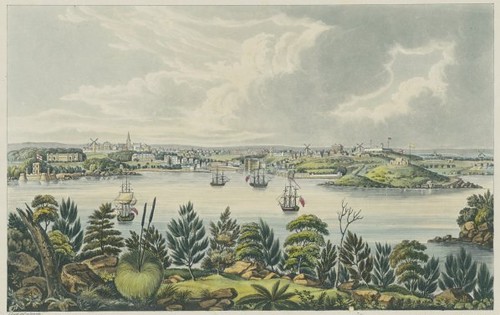
North view of Sydney, New South Wales
1825 (Joseph Lycett)
1825 (Joseph Lycett)
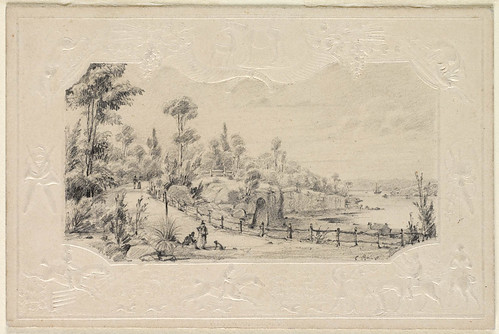
Harbour view with road in foreground

Harbour view with road in foreground
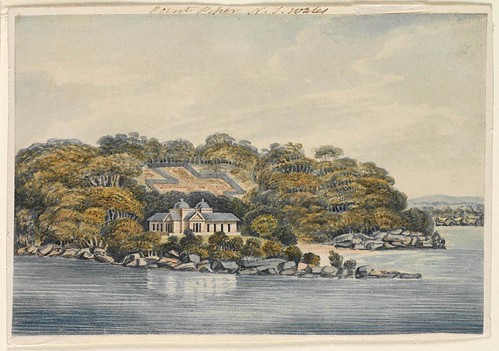
Eliza Point, near Sydney New South Wales

View of Captain Piper's naval villa
at Eliza Point 1825 (Joseph Lycett)
at Eliza Point 1825 (Joseph Lycett)
![Sydney 1830 [view of the Domain and Mrs. Macquarie's Point]](http://farm4.static.flickr.com/3233/3028969345_a6fb3b93bb.jpg)
Sydney 1830 [view of the Domain and Mrs. Macquarie's Point]
![Sydney 1830 [Government House Stables from the Domain]](http://farm4.static.flickr.com/3239/3028969121_795d4d8e37.jpg)
Sydney 1830 [Government House Stables from the Domain]
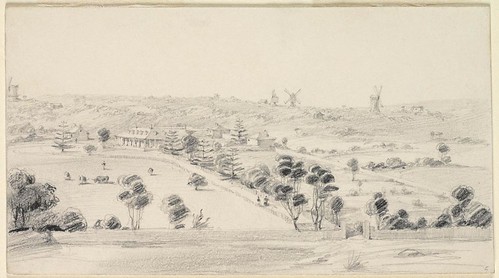
View of Woolloomooloo with residence

The residence of Edward Riley, Esq.,
Wooloomooloo near Sydney, N.S.W.
1825 (Joseph Lycett)
Wooloomooloo near Sydney, N.S.W.
1825 (Joseph Lycett)
![Sydney 1830 [view of Woolloomooloo Bay and Garden Island]](http://farm4.static.flickr.com/3285/3028969229_0581de010f.jpg)
Sydney 1830 [view of Woolloomooloo Bay and Garden Island]
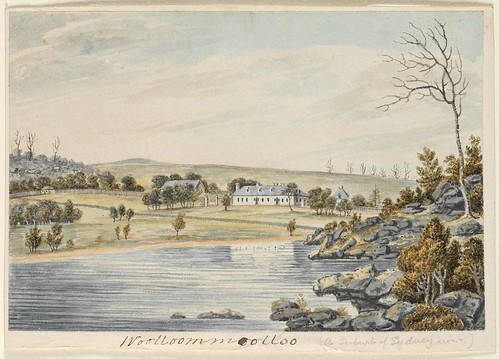
East View of Wooloomooloo near Sydney

Distant view of Sydney from the lighthouse
at South Head, New South Wales
1825 (Joseph Lycett)
at South Head, New South Wales
1825 (Joseph Lycett)
![Convict Barrack Sydney N.S. Wales [ca. 1820]](http://farm4.static.flickr.com/3284/3028967927_12e496dca6.jpg)
Convict Barrack Sydney N.S. Wales [ca. 1820]
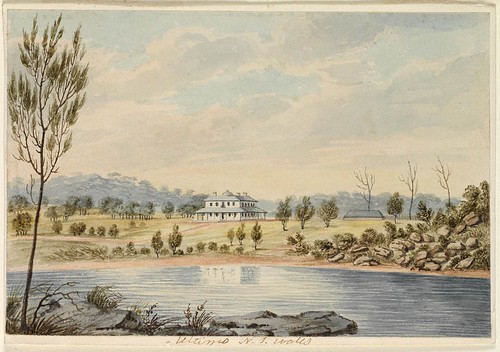
East View of Ultimo in Sydney

Botany Bay, New South Wales 1825 (Joseph Lycett)
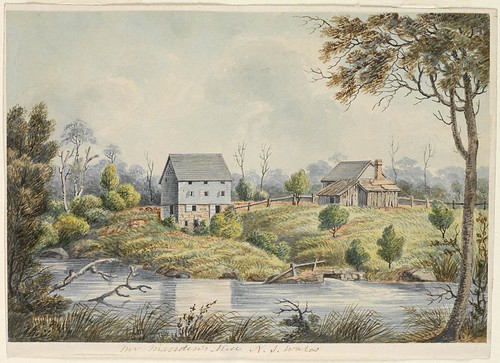
Mr Marsden's Mill N.S.Wales, near Parramatta
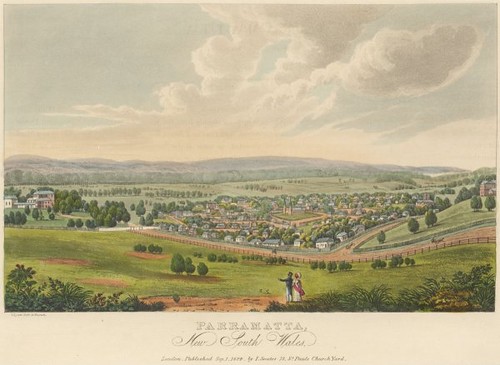
Parramatta, New South Wales 1825 (Joseph Lycett)

The residence of John McArthur Esqre.
near Parramatta, New South Wales
1825 (Joseph Lycett)
near Parramatta, New South Wales
1825 (Joseph Lycett)

View of George's River near Liverpool New South Wales
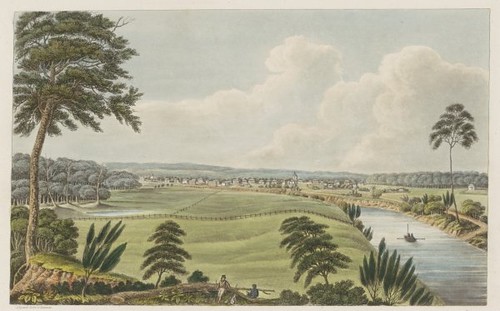
Liverpool, New South Wales 1825 (Joseph Lycett)
- *'Eliza Point' is now known as Point Piper and has the most expensive real estate in the country.
- *Parramatta is approx. 20km north west of the city centre
- *Liverpool is approx. 20km south west of the city centre
- *The Domain is still a large grassed area, flanked by the NSW Art Gallery and host to summer music festivals (just above the 'y' in Sydney on this map)
- *I live about 30km south of the city centre
- *Woolloomooloo (yes, really) is pronounced Wool-ah-m'-loo. Say it a bit faster. Perfect! (It's approx. below and slightly to the right of the 'y' in Sydney on this map)
The above images (most were spot-cleaned) were sourced from:
'Collection of views predominantly of Sydney, Liverpool, and the Sunda Straits, and portraits, ca 1807, 1829-1847, 1887' at the New South Wales State Library --- this album is basically a motley collection of prints, drawings and portraits put together in the 1940s by AW Fuller. There is mention in the background notes of the panorama at Leicester Square - I never did find the Sydney panorama for the entry from the other day - which is how I came to discover this album.
The balance of the images - by Joseph Lycett - are from a collection of ninety five aquatint engravings at the National Library of Australia. Transported to Australia as a convict, Joseph Lycett produced a series of engraved views of New South Wales and Tasmania, from 1824, that were published monthly in London. Eventually they were all published together under the title, 'Views of Australia'.
Afterthought: 'First Australians' is one of the best documentary series I've ever seen and can be viewed on the web. It screened on SBS last month. Highly recommended.
"First Australians chronicles the birth of contemporary Australia as never told before, from the perspective of its first people. First Australians explores what unfolds when the oldest living culture in the world is overrun by the world's greatest empire.
Over seven episodes, First Australians depicts the true stories of individuals - both black and white - caught in an epic drama of friendship, revenge, loss and victory in Australia's most transformative period of history.
The story begins in 1788 in Sydney, with the friendship between an Englishmen (Governor Phillip) and a warrior (Bennelong) and ends in 1993 with Koiki Mabo's legal challenge to the foundation of Australia. First Australians chronicles the collision of two worlds and the genesis of a new nation."




















6 comments :
Well, those look decidedly idyllic, apart from the convict barracks (I was beginning to wonder whether convicts simply didn't live in the area or if there was a cover-up). But would you say the site re the convict-artist/forger Lycett is right in saying "they look more like English parkland than antipodean bush scenes"? They remind me quite a bit of John H. B. Latrobe's pictures of White Sulphur Springs in what's now West Virginia (see for example this and this), but I think that's just the style of the day.
Style of the day?? Umm, simple watercolour scenic sketches (or their lithographic children and pencil sketched half-brothers) are just a regular attempt at reporting the scene and not period-specific are they? Are THEY?!! They could have been made a year ago - of unnamed locations - and I wouldn't be able to tell (or so I thought).
To be honest, I don't think this set of images is all that remarkable artistically speaking, but they appealed to me - and perhaps this post is more personally indulgent than the norm - because of the contrast with what's there today. I had thought about trying to locate recent photos for a 'then and now' juxtaposition, but the locations are generally vague (and I was also lazy). Scenic sketches, unless they are pretty exceptional, are always going to be of greatest interest to those who know the place(s).
Oh. I was blathering on about what I thought you asked. English parkland? I guess so. But that's what the Empire brought to every place they invaded I mean colonised didn't they?
The specific sites chosen by Lycett were in populated areas, as far as I can tell, so the landscape had been modified to the prevailing tastes (which are of course still prevalent to one extent or another) but "real bush" would not be found, or at least would only be found in pockets, in the heavily populated areas. [maybe they don't look 'heavily populated', but the harbour/W'loo/Parramatta/Liverpool areas were, by even then, the main centres of Sydney. There's also the possibility (and maybe this really gets to your 'style' comment) that the scenes have been somewhat embellished for the English market. I can't say. The scenes are not sufficiently detailed (and the digital images are not so big) to be able to identify, for instance, natives -vs- introduced species.
I don't know, I think there's a bit of a specific early-19th-century style to certain watercolor landscapes. Mid-20th-century watercolor landscapes have a very different feel to them, even if of the same type of places. And I find I like the Biedermeier-sort-of ones, whether or not they're exactly great art; I agree this set isn't but they're awfully likable and I haven't even set foot in your neighborhood so that can't be why I like them. (Haven't gotten myself to White Sulphur Springs either for that matter. One of these days.)
You can go out and sketch yer neighborhood now and post the results for us. We're waiting for that then-and-now bit.
Now that's simultaneous typing. Brilliant effect! (How come yours got posted first if they're both 14:50????)
I think you're right on the general colonizing effect. And I still say you get specific ways of looking at things and recording them at specific historical periods.
No question but that some of those looked like more populated than I would have expected given my shaky grasp of Australian colonial settlement history. I'll have to watch that film and improve myself so that I can torment my students with comparisons of colonial N. America to colonial Australia...
Beautiful. I love this site. I had no idea you were Australian. My image was someone squirrelling awy in the depths of obscure European libraries (physically, rather than online).
Post a Comment
Comments are all moderated so don't waste your time spamming: they will never show up.
If you include ANY links that aren't pertinent to the blog post or discussion they will be deleted and a rash will break out in your underwear.
Also: please play the ball and not the person.
Note: only a member of this blog may post a comment.